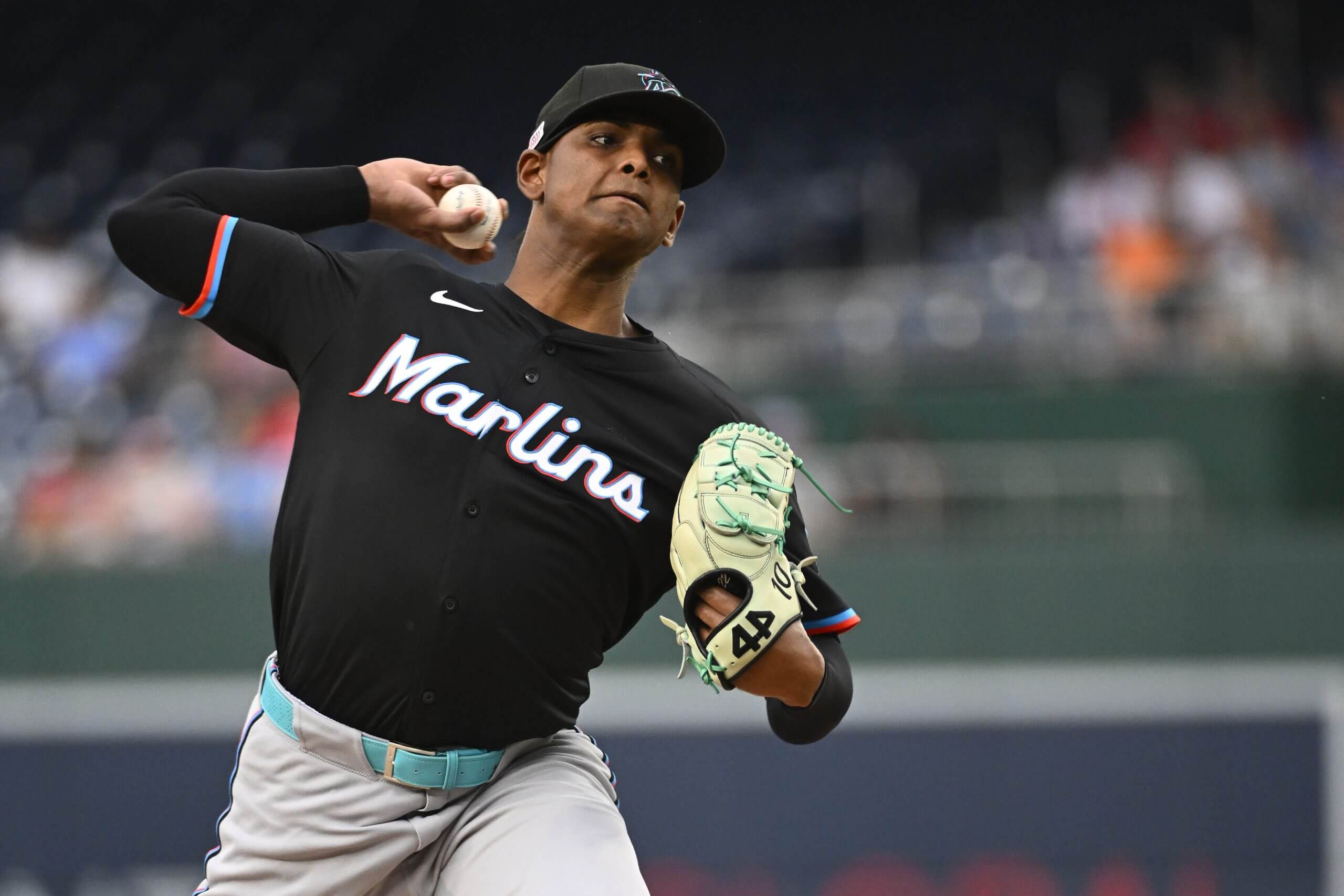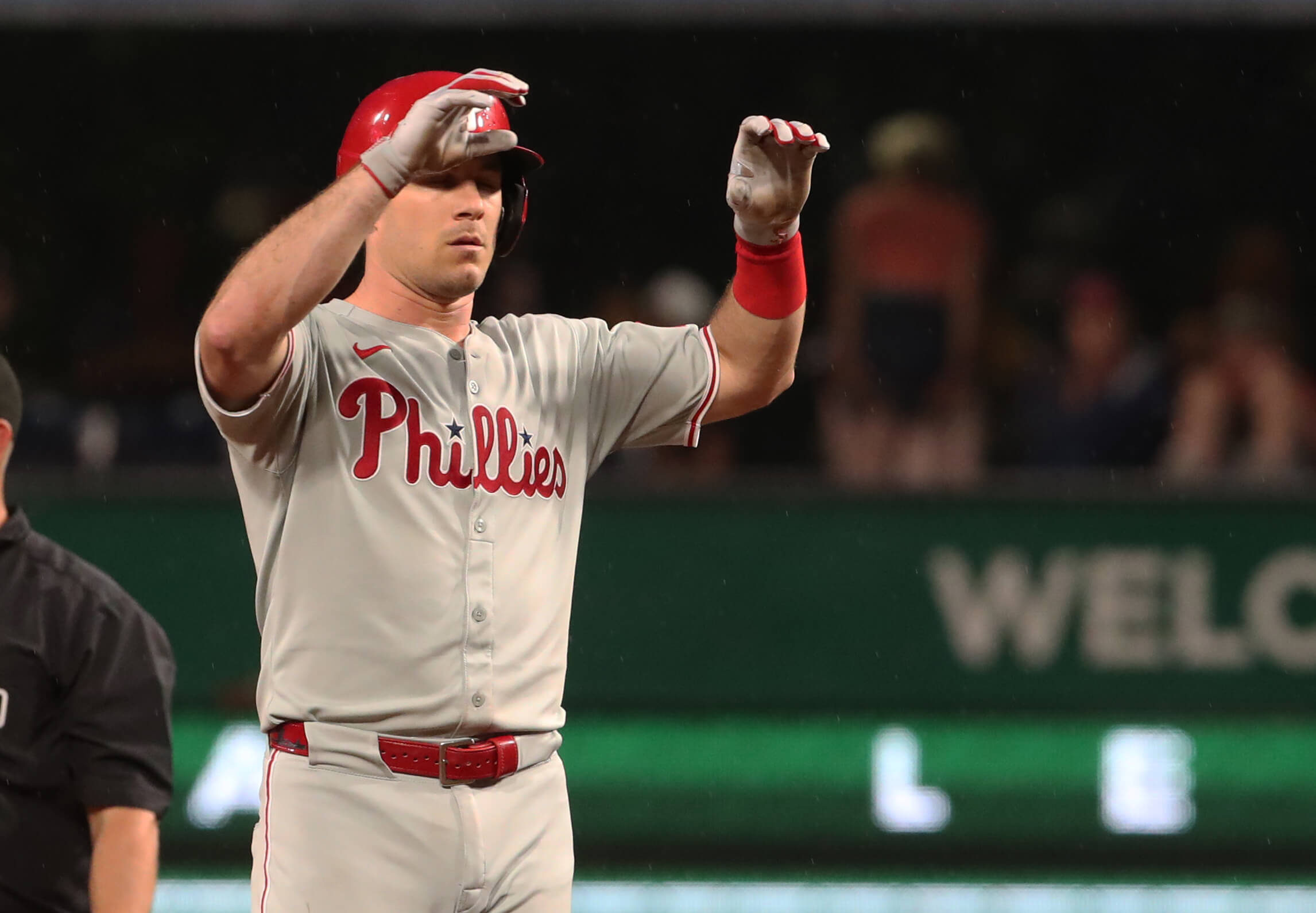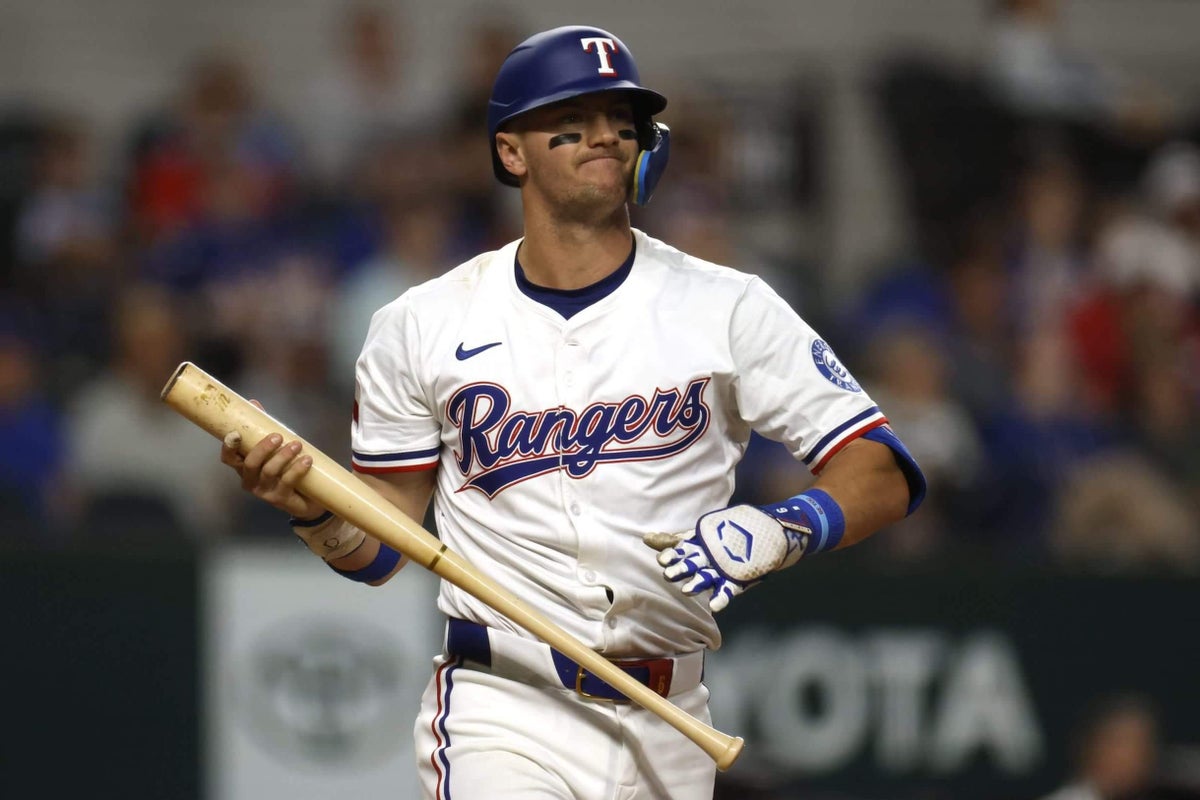One of baseball’s more baffling trends is set to resume Friday night when the Texas Rangers host the Seattle Mariners.
Texas’ Globe Life Field has turned into a pitcher’s paradise – and hitter’s nightmare.
“Our people are perplexed,” Rangers general manager Chris Young said. “We’re looking at everything from the humidor to which doors and windows are open at what points of time during the game for entrance and egress. We don’t have answers right now.”
Globe Life this season is the most difficult run-scoring environment in the majors, according to Statcast’s Park Factor metric. It was the third most difficult last season. But in 2023, the year the Rangers won the World Series, it was the third easiest.
The odd transformation of Globe Life is not the reason the Rangers are one of the game’s most disappointing teams – they’re 23-16 at home, 17-25 on the road. But their record at Globe Life is largely attributable to their pitching staff’s major-league best 2.68 home ERA. Texas is scoring 3.44 runs per game at home, second lowest in the majors.
Consider the team’s performance on barrels – hard-hit batted balls that, in terms of exit velocity and launch angle, have led to a minimum .500 batting average and 1.500 slugging percentage since the introduction of Statcast in 2015.
The Rangers are batting just .458 on barrels at home. On the road, they’re at .722. Their opponents’ splits on barrels are less severe – .564 at Globe Life, .678 on the road. The league average, in all parks, is .676.
The flip side for the Rangers is that their pitchers are benefiting from the same trends, ranking second in the majors with a 3.25 ERA. But the team’s offense this season has been its downfall. Virtually every Texas hitter is underperforming. And Globe Life might be part of the problem.
“It’s a really hard thing for me to reconcile,” Young said. “Yes, the park is playing bigger. We’ve also found ways to win at home. Is that impacting us on the road? I can’t say.”
The Marlins’ trade calculus
Based on the Miami Marlins’ track record, it’s reasonable to assume they will trade both of their top right-handers, Sandy Alcantara and Edward Cabrera. But Alcantara, if he continues his recent resurgence, is perhaps the more likely to go.
Alcantara, 29, is older than Cabrera, more expensive and under club control for one fewer season. He is owed the balance of his $17 million salary this season and $17 million next season with a $21 million club option for 2027.

Edward Cabrera has both impressive stuff and has been plagued by repeated trips to the injured list. (Brad Mills-Imagn Images)
Cabrera, 27, is earning $1.95 million this season, with three years of arbitration left after that. The Marlins plan to contend before he becomes a free agent. But they do not figure to be in that position next season, Alcantara’s final guaranteed year.
Alcantara, coming off Tommy John surgery, had an 8.47 ERA in his first 11 starts, a 2.74 in his last four. He is a favorite of owner Bruce Sherman and really, the entire organization. The Marlins could wait until the offseason to trade him. But at that point, he would be available for two pennant races instead of three, and teams would not necessarily consider his $21 million option to be automatic.
Going forward with Cabrera would be a different kind of risk. The Marlins are tantalized by his talent. His stuff and command are improving, as is his mental approach. But Cabrera has been on the injured list seven times since 2021, including three times for a shoulder impingement in 2023 and ‘24. He has never made more than 20 starts in a season.
With both pitchers, much depends upon what happens in the next five weeks. The better Alcantara and Cabrera perform, the better the offers teams will make for them. And the greater temptation for the Marlins to move them will be.
Would Brewers do Hader II?
Ten days ago, the Milwaukee Brewers were in the middle of a 6-7 stretch, 6 1/2 games back in the NL Central and a half game back in the wild-card race. At that moment, a trade of right-hander Freddy Peralta seemed well within the range of possibility.
And now?
A 6-1 run has elevated the Brewers to within three games of the Chicago Cubs and past the San Diego Padres for the third wild-card spot. Sitting on a potential surplus of starting pitching, even after trading righty Aaron Civale, the Brewers still might consider moving Peralta or lefty José Quintana. But after the blowback the team experienced from the Josh Hader trade in 2022, owner Mark Attanasio almost certainly will be reluctant to authorize a similar move.
The Hader deal worked out well long-term, yielding outfielder Esteury Ruiz, whom the Brewers later flipped to the Athletics for catcher William Contreras and reliever Joel Payamps, as well as top pitching prospect Robert Gasser, who is recovering from Tommy John surgery. But the Brewers invited scrutiny for trading an elite closer in the middle of the season, and missed the playoffs in ‘22.
Attanasio is sensitive to perception. Peralta, on track for potentially his best season, is signed for a below-market $8 million salary both this season and next. Trading him at the deadline – after an offseason in which the Brewers parted with Hader’s successor, Devin Williams, and lost shortstop Willy Adames to free agency – likely would not be received well, both inside and outside the clubhouse.
A postseason rotation headed by Peralta, Quintana and rookie phenom Jacob Misiorowski, on the other hand, would appear formidable. The Brewers’ current starting group also includes Quinn Priester and Chad Patrick, who has a 7.80 ERA in his last three starts. Logan Henderson and Tobias Myers are at Triple A. And Brandon Woodruff and Nestor Cortes Jr. are working their way back from injuries.
Anything is possible if the Brewers stumble before the deadline, and maybe even if they don’t. The team could use a boost at both shortstop (28th in OPS entering Thursday’s play) and third base (27th), though Joey Ortiz and Caleb Durbin are hitting well in June.
Peralta is not quite an ace – his 3.74 expected ERA is above his actual 2.90. But at his salary, he’s also not the kind of pitcher a small-market contender should trade at the deadline. Not unless the return significantly upgrades another part of the major-league roster.
Why Pirates’ Keller could go
Only 18 months ago the Pittsburgh Pirates signed right-hander Mitch Keller to a five-year, $77 million extension. The team is in a different place now than it was then, making a trade of Keller possible, if not likely.
In both the majors and minors, the Pirates are deep in young starting pitching. Yet, any payroll increase they anticipated isn’t happening, in part because their attendance is down as they keep losing. Their offense, meanwhile, remains a major problem, as evidenced by Keller’s 1-10 record despite an ERA+ that is four percent above league average.
Under Derek Shelton, the Pirates were 12-26 and averaged 3.11 runs per game, last in the majors. Their 20-24 record under Don Kelly is an improvement, but their average of 3.39 runs per game during that time is . . . next to last.
Ace right-hander Paul Skenes and franchise icon Andrew McCutchen are the Pirates’ only untouchables, according to officials briefed on the team’s plans. As free-agent prices for starting pitchers soar, Keller’s contract looks increasingly reasonable. But his $15 million salary this season occupied nearly 20 percent of the Pirates’ Opening Day payroll, and his guarantees will rise to $16.5 million, $18 million and $20 million over the next three years.
If Pirates owner Bob Nutting refuses to increase payroll, that money would be better spent on offense. And with the team’s home attendance more than 3,000 per game lower than it was last season, expecting Nutting to shift course is sheer folly.
Keller lacks a no-trade clause. At 29, he still has upside. And he is available for four pennant races.
The Pirates’ asking price likely will be high for a pitcher who was a 2023 All-Star. Keller’s history of inconsistency might temper the offers. But in a market thin on quality starting pitchers, the Pirates should be motivated to take advantage.
Soto on the run!
Everyone can relax about Juan Soto, no?
His 19 homers through 81 team games matched his total from last season with the New York Yankees, the club he supposedly didn’t want to leave. And according to MLB.com’s Sarah Langs, he entered Thursday night with an expected slugging percentage of .879 in June. The player who ranked second on that list, the Los Angeles Angels’ Jo Adell, was nearly 200 points below that at .694.
On top of all that, Soto is devoting more attention to a less notable part of his offense — stolen bases.
Soto’s sprint speed is in the bottom 17 percent of the league, but this season he has stolen nine bases in 10 attempts. His career-high in steals is 12, a total he reached in his second season with the Washington Nationals in 2019 and with the San Diego Padres in 2023.
Before a recent game in Philadelphia, Soto could be seen in the Mets clubhouse with first base coach Antoan Richardson, working on his secondary leads and first steps. Soto said Richardson makes base stealing fun, picking up opponents’ tendencies “no one else in the league sees.”
“What we’ve done is come up with creative ways to game plan for that pitcher,” Richardson said. “The part where he said we’re making it fun is not putting him in a box. It’s not, ‘Hey, this is how we’ve always done it, so you have to do it this way.’ No, I want you to feel confident that what you see is real and trust that information and be an athlete out there.
“He’s just taking that and running with it. His baseball IQ is really, really high. In the past, he hasn’t gotten credit all the time for having a high IQ as a baserunner. But when we talk the game and I see him execute the information that’s given to him, it’s as good as anybody else I’ve been around.”
Phillies’ Realmuto looks ahead
The most pressing question catcher J.T. Realmuto will face at the end of the season is whether he will re-sign with the Philadelphia Phillies as a free agent. Beyond that, Realmuto must consider something else: How long does he want to continue playing?
Realmuto, 34, isn’t putting a number on it.

Realmuto is hitting .240 with five home runs and 27 RBIs in 66 games this season. (Charles LeClaire-Imagn Images)
“The body feels as good as it’s ever felt,” he said. “It actually feels better now than it did in the second half of last year. After the (right knee) surgery (on June 12), I was still trying to get some inflammation out. But this year, the knee has felt great. Everything has felt really good.
“I do want to play as long as I can. I want to keep my body in the best shape I can. I want to continue to have fun. I’ll know when it’s time to hang ‘em up. If I’m not productive, if I’m not helping the team, I’m not going to try to get to the number 40.”
Family also will be a consideration. Realmuto and his wife, Alexis, have four children, ages 2 to 6.
“If my kids get to an age where they want daddy home . . . they already want daddy home, obviously,” Realmuto said. “But if they’re not enjoying it, not enjoying the big-league life anymore, that will probably be a day I hang it up as well. Either my performance or body will tell me first, or my family will.”
Catchers in the draft: Tough to project
Perhaps it’s a good thing no catcher is projected to be a top-five pick in the draft. Joe Mauer, the No. 1 pick in 2001, made it to the Hall of Fame. But the last three catchers to go either first or second — collegians Joey Bart in 2018, Adley Rutschman in 2019 and Henry Davis in 2021 — have yet to fulfill their promise.
Rutschman, drafted by the Baltimore Orioles one place ahead of Bobby Witt Jr., currently is on the injured list for the first time with a strained left oblique, and has a .628 OPS since June 21, 2024.
Bart hit 13 home runs for the Pirates last season after the San Francisco Giants designated him for assignment, but has only one homer in 166 at-bats this season.
Davis went No. 1, in part, because he was willing to sign below slot, enabling the Pirates to go above slot with two pitchers who became top prospects, Anthony Solometo and Bubba Chandler. But with a career .584 OPS, he still qualifies as a disappointment.
Which is not to say teams should avoid drafting catchers in the first round. The Cincinnati Reds’ Tyler Stephenson, Los Angeles Dodgers’ Will Smith, Cleveland Guardians’ Bo Naylor, Athletics’ Shea Langeliers, Giants’ Patrick Bailey and New York Yankees’ Austin Wells all were first rounders, though none went higher than ninth overall. And while a number of other first-round catchers were busts, so were a number of first rounders at other positions.
Fun fact: Realmuto, the Seattle Mariners’ Cal Raleigh and Atlanta Braves’ Sean Murphy and Drake Baldwin were all third rounders.
All-Star wish list
Some of the coolest All-Star stories are ones in which players overcome injuries to reach their previous level of performance or attain an even higher one.
Minnesota Twins center fielder Byron Buxton certainly fits into that category. So do three pitchers who entered Thursday ranked among the top three in the majors in ERA – Rangers right-hander Jacob deGrom (4th), Tampa Bay Rays righty Drew Rasmussen (8th) and Cubs lefty Matthew Boyd (13th).
The last time deGrom made an All-Star team was 2021. The last time he pitched in the game was 2019. The All-Stars that year included David Dahl, Joey Gallo and Tommy La Stella, Austin Meadows, Hunter Pence and Masahiro Tanaka.
Rasmussen, who underwent three major elbow surgeries, has never been an All-Star. Neither has Boyd, who underwent flexor-tendon surgery in Sept. 2021 and Tommy John surgery in 2023.
And finally…
Don’t look now, but the symbol of the Orioles’ early collapse, right-hander Charlie Morton, is emerging as a legitimate trade candidate.
Morton, 41, lost his spot in the rotation after posting a 10.89 ERA in his first five starts. But since returning to the rotation for good on May 26, his ERA in six starts is 2.90. He also has struck out 37 in 31 innings.
The biggest concern for a team interested in acquiring Morton might be paying the balance of his $15 million salary. At the deadline, he still would be owed nearly $5 million.
(Top photo of Josh Jung at Globe Life Field in April: Ron Jenkins/Getty Images)
